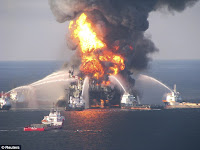By Norris McDonald

 I was unexpectedly sprayed with a pesticide on a South African Airways flight from Dakar, Senegal to Johannesburg, South Africa. Just before takeoff, an announcement was made that the plane would be sprayed and about a minute later, flight attendants walked down both aisles with a can of pesticide in each hand spraying throughout the cabin. All I could do was put a hankerchief over my nose, lean down in my chair and take shallow breaths. I prayed that I would not start reacting. I am a chronic, acute asthmatic and this was my worst nightmare: an 8 hour flight facing me and I was just sprayed with a pesticide. One whiff of such vapor can send me to the ICU, or what my doctor friends call "I see you later."
I was unexpectedly sprayed with a pesticide on a South African Airways flight from Dakar, Senegal to Johannesburg, South Africa. Just before takeoff, an announcement was made that the plane would be sprayed and about a minute later, flight attendants walked down both aisles with a can of pesticide in each hand spraying throughout the cabin. All I could do was put a hankerchief over my nose, lean down in my chair and take shallow breaths. I prayed that I would not start reacting. I am a chronic, acute asthmatic and this was my worst nightmare: an 8 hour flight facing me and I was just sprayed with a pesticide. One whiff of such vapor can send me to the ICU, or what my doctor friends call "I see you later."I lived but vowed to take up this issue on behalf of all travelers involuntarily exposed to being sprayed with a pesticide. I know that this practice, known as "disinsection," endangers the health of both passengers and flight staff. I was just lucky. If given a choice, I would have gotten off of the airplane. Who initiated these pesticide applications, and who is responsible for the results of this practice? Not the airlines--they say it is required of them by the governments of various countries. But while authorities in those countries may be ordering the procedure, they are also acting on the recommendations of a United Nations affiliate, the World Health Organization WHO).
The application of these pesticides inside of occupied airplanes in other countries is outside of the Environmental Protection Agency (EPA) and Federal Aviation Administration's (FAA) regulatory areas of responsibility. The US Department of Transportation (DOT) website lists the countries that require in-flight spraying. No U.S. agency requires pesticide use on planes. The World Health Organization has long held that the pesticides are safe for aircraft use when the active ingredient in an aerosol makes up no more than 2% of its ingredients.

 The application method varies by country and airline. Typically, a pressurized spray containing 2% phenothrin or Permethrin #216 is sprayed over the passengers' heads during the flight (called "top-of-descent"). According to the Fair Air Coalition, people who have allergies or asthma or are pregnant and are booked on a flight requiring onboard spraying can request an exemption. The exemption only works if the spraying is done after landing. If spraying is scheduled after boarding you can ask them to spray after landing. The exemption will allow you to get off before the spraying on the ground, but no other passengers can deplane. Passengers with a letter from their doctor saying they are allergic to insecticide are usually allowed off the plane when the spraying is done after landing.
The application method varies by country and airline. Typically, a pressurized spray containing 2% phenothrin or Permethrin #216 is sprayed over the passengers' heads during the flight (called "top-of-descent"). According to the Fair Air Coalition, people who have allergies or asthma or are pregnant and are booked on a flight requiring onboard spraying can request an exemption. The exemption only works if the spraying is done after landing. If spraying is scheduled after boarding you can ask them to spray after landing. The exemption will allow you to get off before the spraying on the ground, but no other passengers can deplane. Passengers with a letter from their doctor saying they are allergic to insecticide are usually allowed off the plane when the spraying is done after landing.Some nations require passenger airplanes arriving from other countries to be sprayed with insecticide to protect plants, animals and people.
These countries require spraying of insecticides while passengers are on board:
Grenada
India
Kiribati
Madagascar
Trinidad and Tobago
Uruguay
These countries allow planes to be treated while they are empty; the pesticides used are designed to be effective for up to two months.
Australia
Barbados
Fiji
Jamaica
New Zealand
Panama
These countries require spraying of planes from particular regions where there are contagious or infectious diseases.
Czech Republic
Indonesia
South Africa
Switzerland
United Kingdom
Source: Department of Transportation
(Mother Jones, 8/1998, Global Healing Center, Grist, 10/21/2003, Perry Sanders Law, )












































